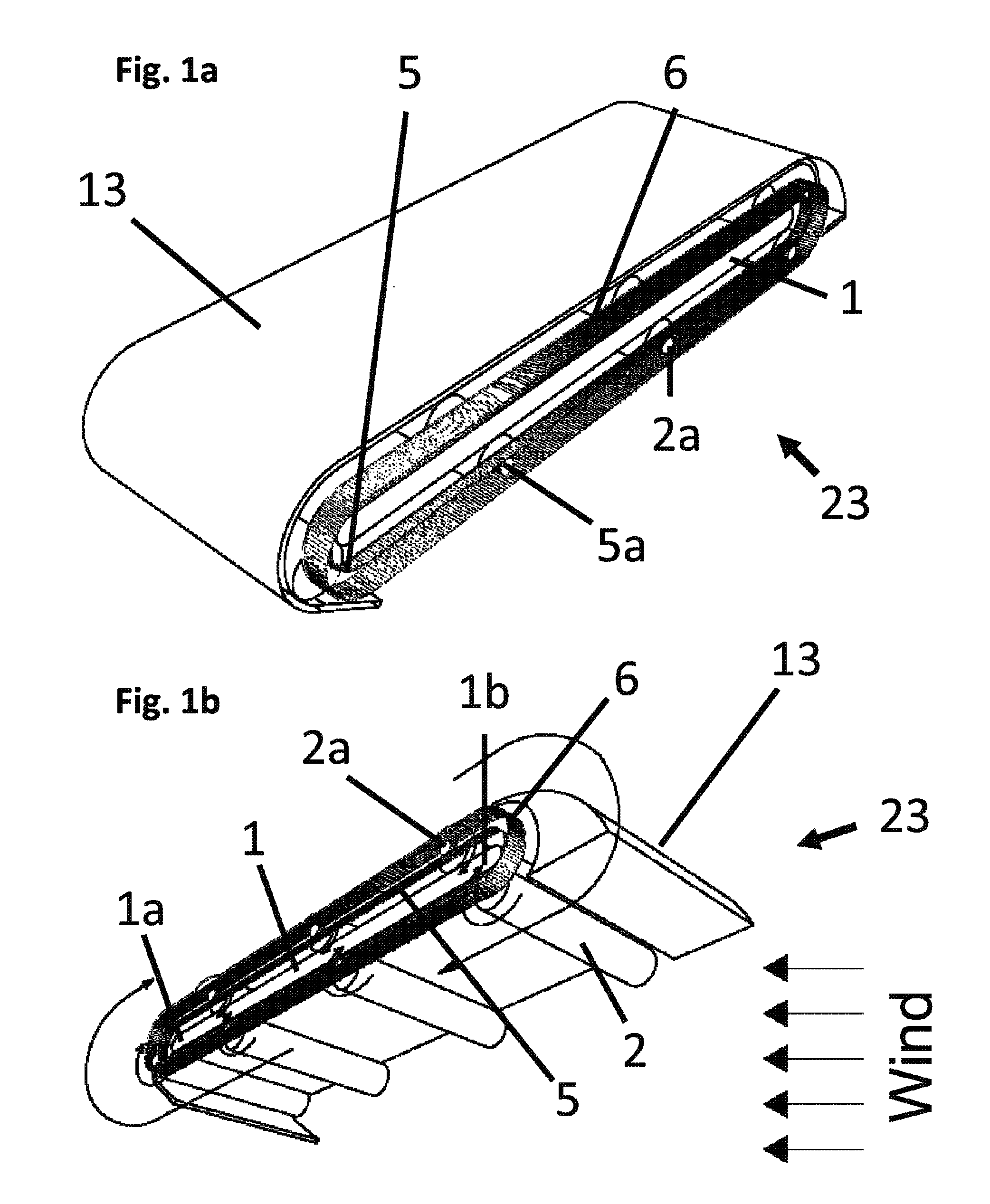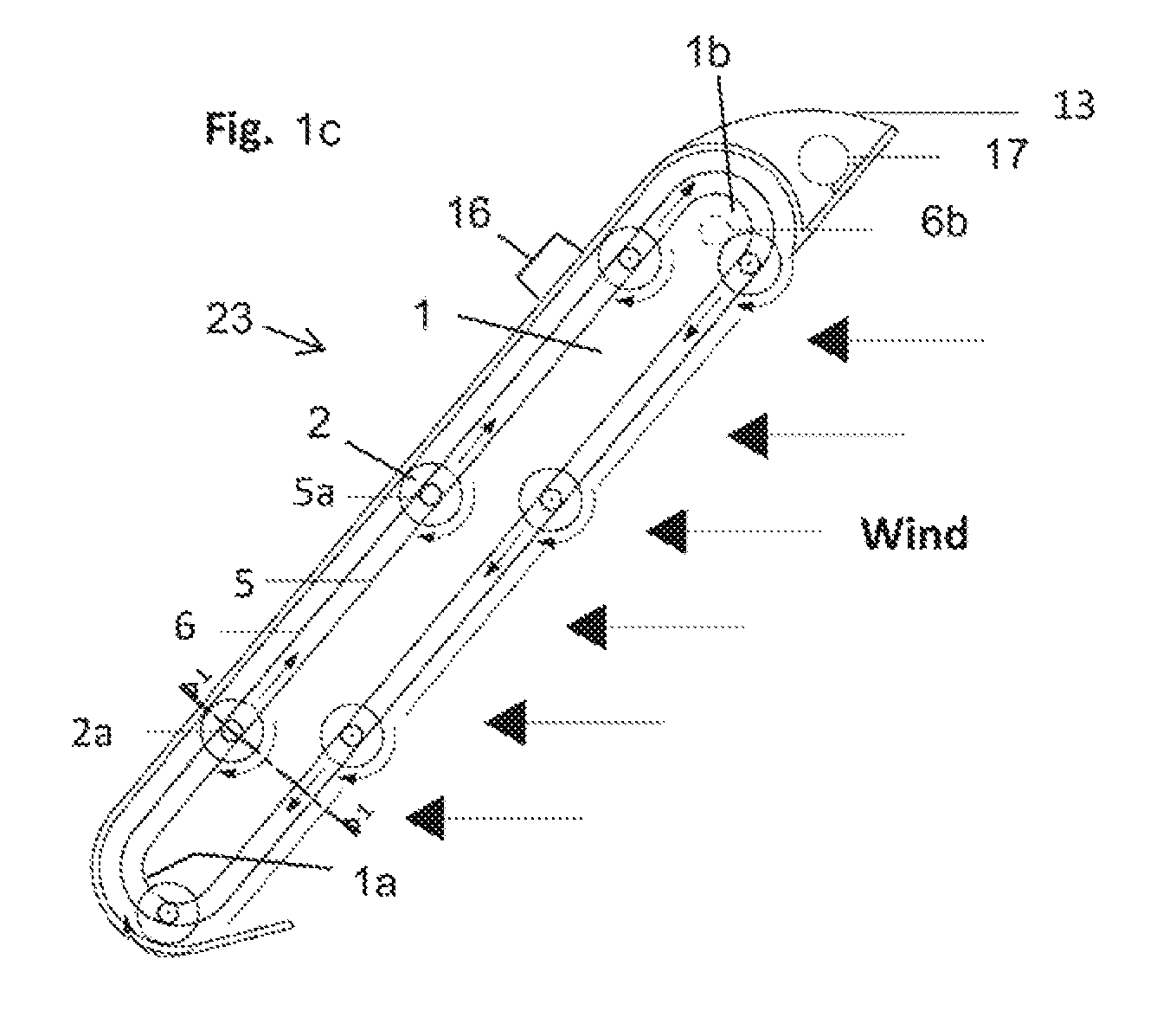Orbiting drum wind turbine and method for the generation of electrical power from wind energy
a technology of wind turbines and wind energy, which is applied in the direction of propellers, water-acting propulsive elements, energy industry, etc., can solve the problems of insufficient supply of oil, natural gas or coal, insufficient use of wind energy for electricity generation, and inability to meet the needs of the environment, etc., to achieve low cost, reduce susceptibility to failure, and compact design
- Summary
- Abstract
- Description
- Claims
- Application Information
AI Technical Summary
Benefits of technology
Problems solved by technology
Method used
Image
Examples
Embodiment Construction
[0043]The present invention will now be described in detail. The figures are illustrative examples of the invention presented to enable those skilled in the art to practice the invention. These figures and examples are not meant to limit the scope of the present invention to a single embodiment. Other embodiments can be implemented by interchanging some of the described or illustrated elements and by using equivalent structures.
[0044]First the linear motion of the drive elements will be described, followed by the means for guiding the drive elements in their courses as they travel around a continuous orbiting course. Then the means for spinning the drive elements will be discussed, followed by a discussion of the apparatus for transferring energy from the drive elements. Finally, additional features of the apparatus will be explained.
[0045]The linear motion of the drive elements according to one embodiment is illustrated in FIG. 1a and FIG. 1b, which show two partial perspective vie...
PUM
 Login to View More
Login to View More Abstract
Description
Claims
Application Information
 Login to View More
Login to View More - R&D
- Intellectual Property
- Life Sciences
- Materials
- Tech Scout
- Unparalleled Data Quality
- Higher Quality Content
- 60% Fewer Hallucinations
Browse by: Latest US Patents, China's latest patents, Technical Efficacy Thesaurus, Application Domain, Technology Topic, Popular Technical Reports.
© 2025 PatSnap. All rights reserved.Legal|Privacy policy|Modern Slavery Act Transparency Statement|Sitemap|About US| Contact US: help@patsnap.com



